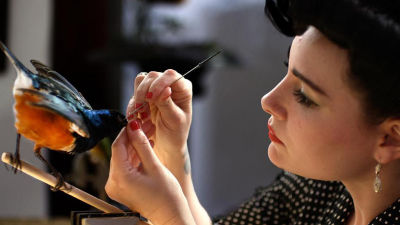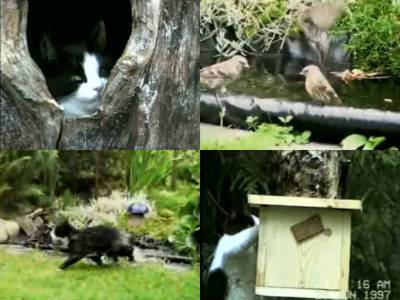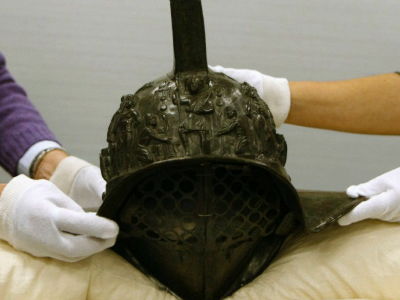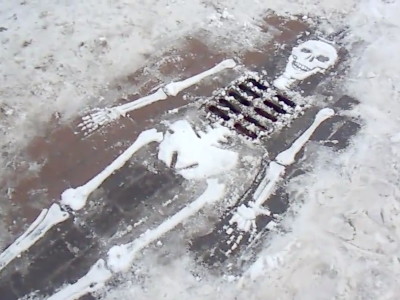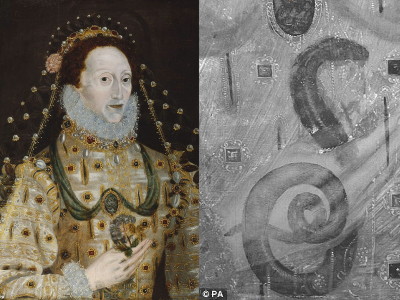A 'strange thing battle' breaks out on SNS, a museum that can not be operated due to the influence of the new coronavirus brings the desired collection
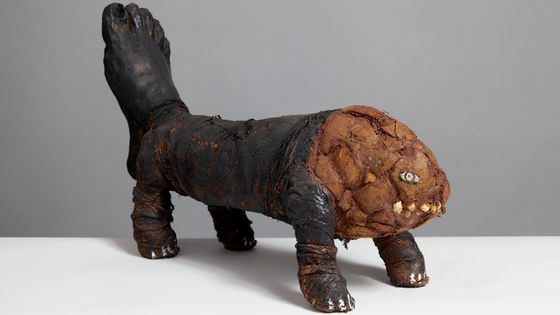
by York Art Gallery
As a measure of the new coronavirus infection (COVID-19), in that many of the museums have been forced to closed, on Twitter ' #CURATORBATTLE ( curator is battle)' was held. Organized by the Yorkshire Museum in England, curators of the museum compete with each other for their proud collections on the theme of weekly themes such as “ shoes ” and “ magical items ”. Among such curator battles, the theme of ' #CreepiestObject (the strangest object)' where the battle was extremely heated , was particularly unusual because museums all over the world received eerie exhibits. I picked up the object I was releasing.
Scary mermaids, cursed toys and mummified cats ... Curator battle started by Yorkshire Museum goes global in bid to find creepiest objects | York Museums Trust
https://www.yorkmuseumstrust.org.uk/news-media/latest-news/scary-mermaids-cursed-toys-and-mummified-cats-curator-battle-started-by-yorkshire-museum-goes-global- in-bid-to-find-creepiest-objects /
The Yorkshire Museum announced in a tweet on April 17, 2020, 'The museums have gathered! The curator battle is about to begin! Today's theme is #CreepiestObject!' At the Yorkshire Museum, hair bundles excavated as burial items of Roman women in the 3rd and 4th centuries were presented. The point is that the owner's hairpin and the hairpin made of black balls are still attached.
MUSEUMS ASSEMBLE! It's time for #CURATORBATTLE ! ????
— Yorkshire Museum (@YorkshireMuseum) April 17, 2020
Today's theme, chosen by you, is #CreepiestObject !
We're kicking things off with this 3rd / 4th century hair bun from the burial of a #Roman lady, still with the jet pins in place ...
CAN YOU BEAT IT ??????? pic.twitter.com/ntPiXDuM6v
Under the challenge of the Yorkshire Museum, the Natural Sciences Department of the National Museum of Scotland stood up. The museum houses a variety of stuffed animals, but the most eerie one is the mermaid.
Our #CreepiestObject has to be this'mermaid '... ???????????? ♀️ #CURATORBATTLE #TroublingTaxidermy pic.twitter.com/GMSosyuqIX
— Natural Sciences NMS (@NatSciNMS) April 17, 2020
The York Castle Museum, which is located in the same area as the Yorkshire Museum, exhibits crab scissors and shell figures representing people carrying gold nuggets and playing cards. 'Typical Victorians loved creepy things,' he said.
STEP ASIDE ALL.
— York Castle Museum (@YorkCastle) April 17, 2020
These are hand-made models of figures playing cards and of gold miners hauling gold nuggets to the surface.BUT the figures are made from crab's legs and claws… Typical Victorians, they loved weird / creepy stuff. #CreepiestObject pic.twitter.com/ A5NHiPGnVh
Kirsty Parsons, curator at the National Army Museum in London, exhibited the 'fingertips' of Major Michael Lane, who was nicknamed 'Bronco.' When Lane climbed Mount Everest in 1976, Major Lane removed the gloves to attach an oxygen cylinder to a fellow who had difficulty breathing. Therefore, Major Lane's finger was frostbitten and had to be resected. This collection is to celebrate the bravery of Major Lane.
Our #CURATORBATTLE entry from @NAM_London -frost bitten fingertips anyone? Https://t.co/PGD61mG5rz pic.twitter.com/KcWgnGwEdP
— Kirsty Parsons (@museum_owl) April 17, 2020
Dan Hicks, a curator at Oxford University's Pitt Rivers Museum and archaeologist at the university, exhibited a sheep-spiked object made in the southwestern United Kingdom around 1911. Although it is a cursed item even if you look at it, Mr. Hicks explains that it is actually 'for solving evil spells'.
Sheep's heart stuck with pins and nails and strung on a loop of cord. Made in South Devon, circa 1911, 'for breaking evil spells', @Pitt_Rivers collections #CreepiestObject #CuratorBattle pic.twitter.com/z5vdCFCU4S
— Dan Hicks (@profdanhicks) April 17, 2020
From the German History Museum, a pest mask by a medical practitioner who treated plague around the 17th century appeared. Although it has a shape that covers the head completely for protection against epidemics, it is similar to modern protective clothing, but the characteristic is a bird-like beak. It was said that plague was believed to be transmitted through a foul odor at that time, so it was used as a filter to prevent infection by filling herbs and the like.
Thanks for thinking of us @HottyCouture and wow, will we be having nightmares tonight with all these #CreepiestObject | s! Here is the one we just can't hide from you, one of our many creepy gems – our Plague Mask (1650 / 1750)! #Curatorbattle pic.twitter.com/JrMjqAJSIM
— Deutsches Historisches Museum (@DHMBerlin) April 17, 2020
A mummified upper body without a head, believed to be from a few centuries BC, is known as the Old Crowhamman , housed in the National Museum of Ireland.
Oldcroghan Man in @NMIreland -or what was left of him after a ritualistic sacrifice. #CURATORBATTLE
— Catherine McGuinness (@CatsInTheMuseum) April 18, 2020
Side note-he was tortured before he died & among other things had his nipples cut off ???? pic.twitter.com/RINuzsR7Qj
Old Crowhanman is believed to have been the body of a deceased ancient power man, but some seemed to have looked different.
Oh, by the pic I thought it was a Geodude pic.twitter.com/BNMShUkClz
— Leonardo Casagrande ❁ (@l_casagrander) April 18, 2020
Although slightly different in color from the museum, the York Art Gallery exhibited an amputated human leg with four legs and an animal head. This is a work by Kerry Jameson, who is known for pottery and wood art, and is not a real foot. You can see many other works by visiting his site .
GUYS we know we have already won.This severed lower leg by Kerry Jameson has sprouted its own legs and a rather beastly head. @ COCAYork #RethinkCeramics pic.twitter.com/Ip84aNacUX
— York Art Gallery (@YorkArtGallery) April 17, 2020
The Nara National Museum participates from Japan. The exhibit was the ' insect ' depicted on the scroll ' Tenju-e ' that is stored in the museum. It looks like a huge insect monster that seems to appear in the movie ' Nausicaa of the Valley of the Wind ', but it is a creature that eats demons and demons that cause disaster, and moths and silkworms are deified. The Nara National Museum described it in a Japanese tweet as 'the most charming person in a picture of a devil with a pretty face.'
If you encounter the Divine Insect (Shinchū) in a nightmare, take heart! This creature from the Extermination of Evil (Hekija-e) paintings is actually a deity who drives away the demons & spirits that cause plagues. (1/2) https : //t.co/O3k6TNdoXd #CURATORBATTLE #CreepiestObject pic.twitter.com/aSBEyXeSJ0
— Nara National Museum, Japan (@narahaku_PR) April 22, 2020
Related Posts:
in Art, Posted by log1l_ks
